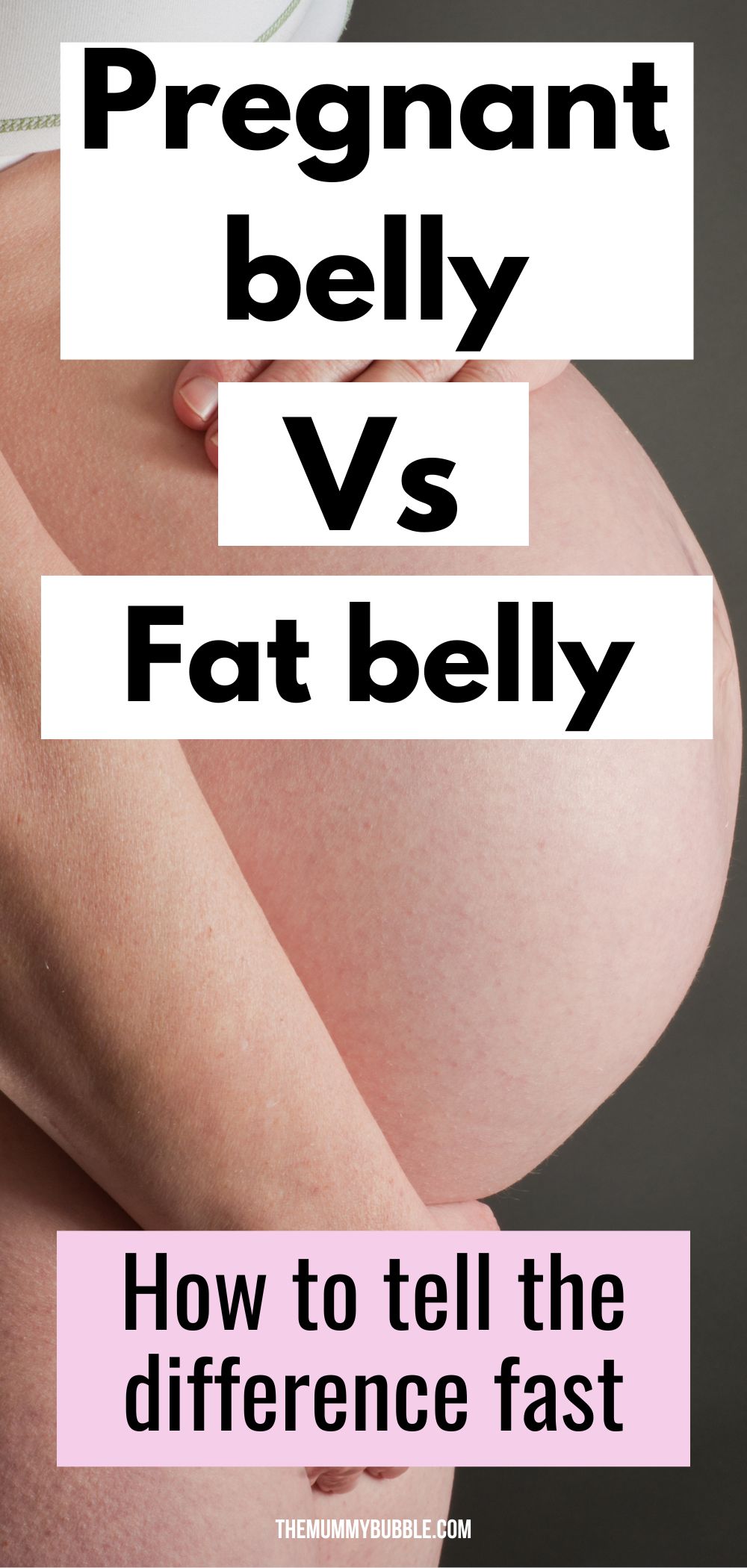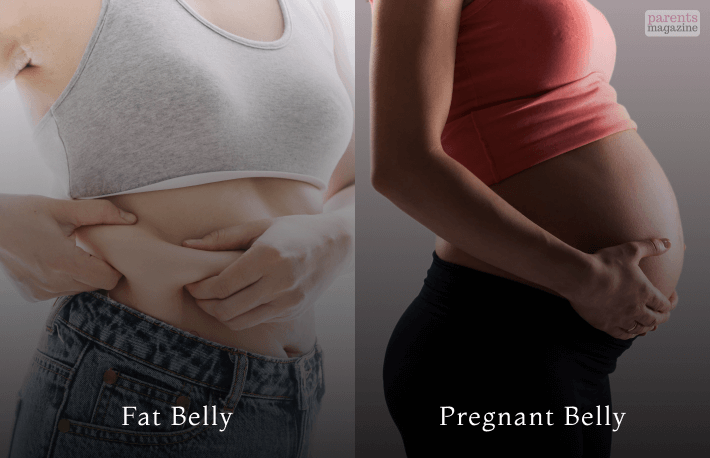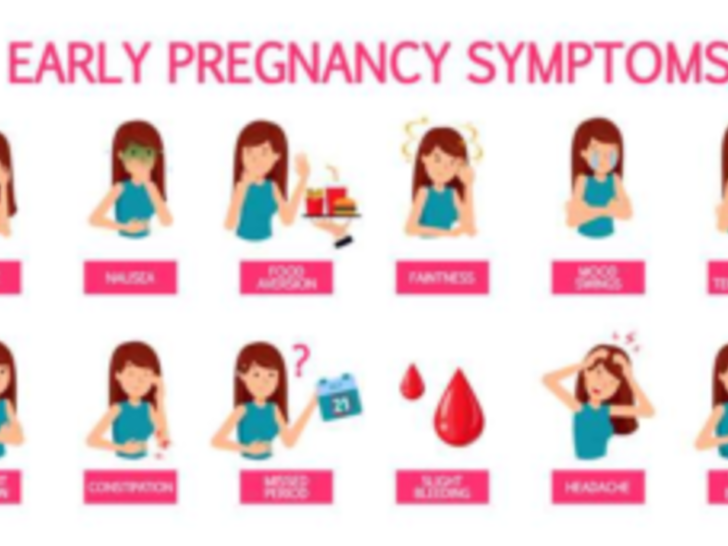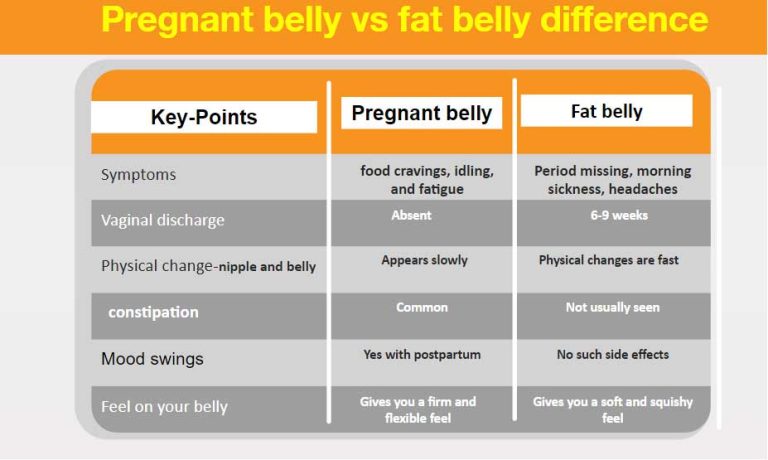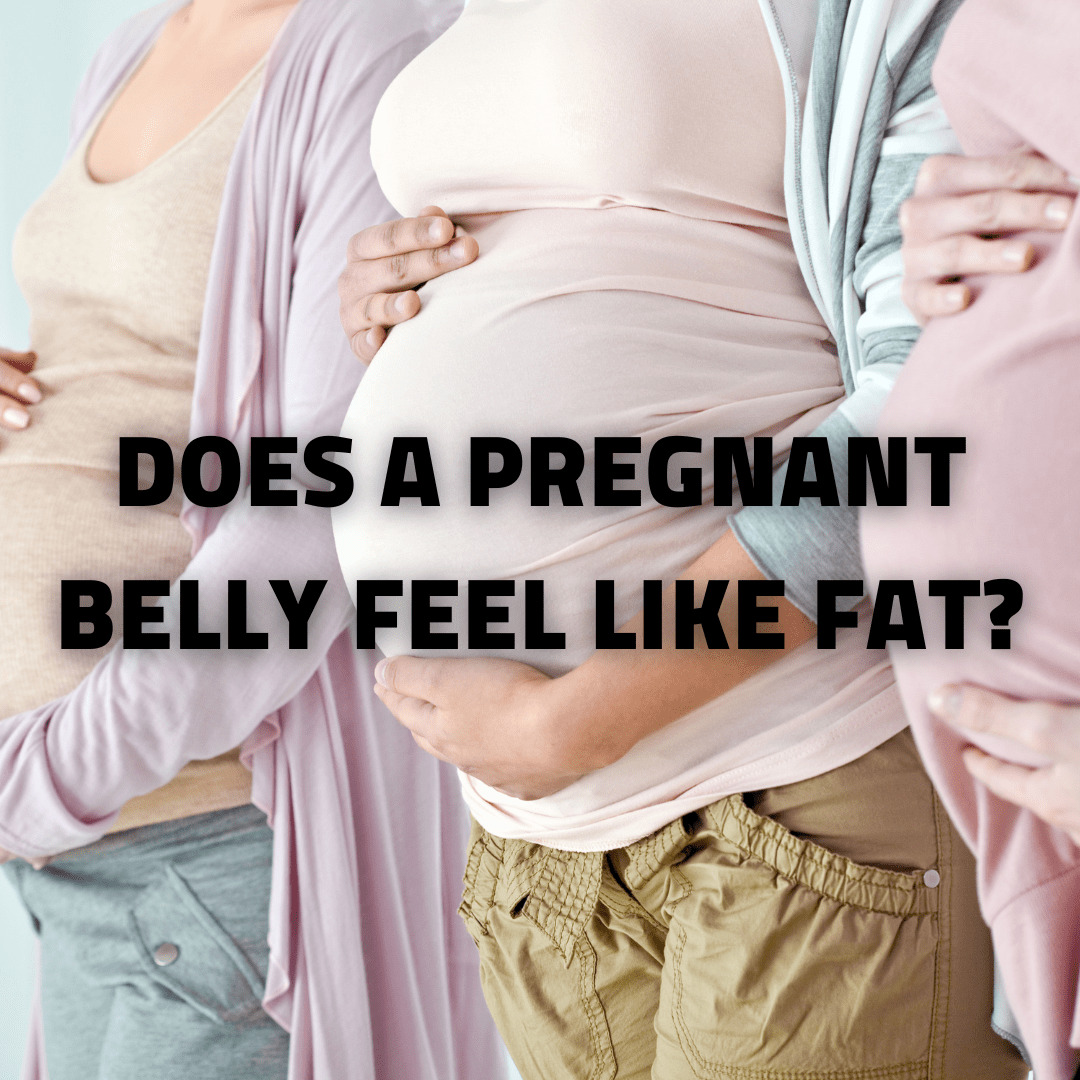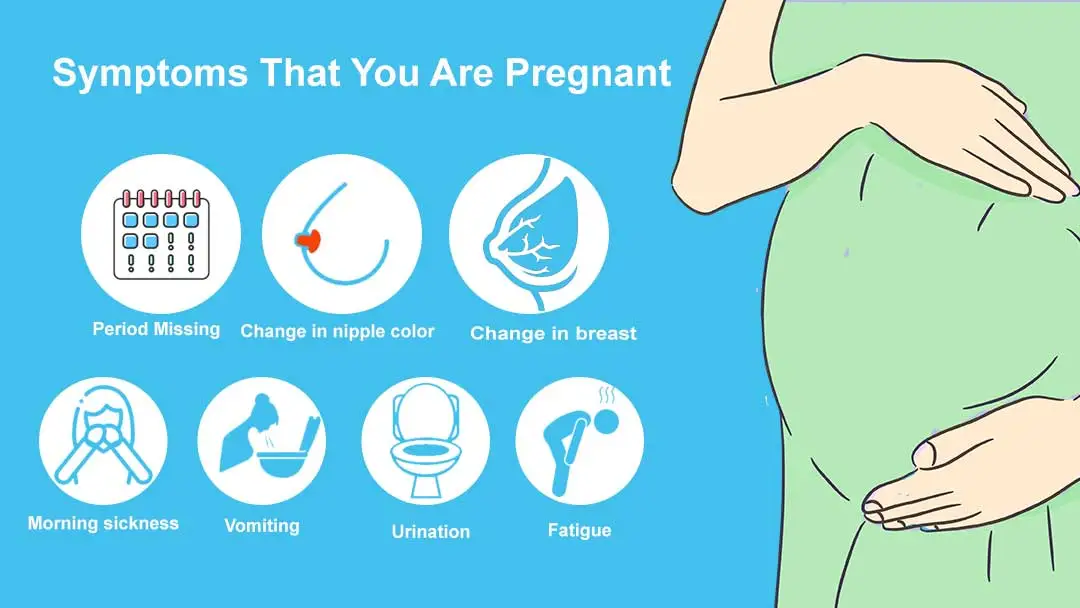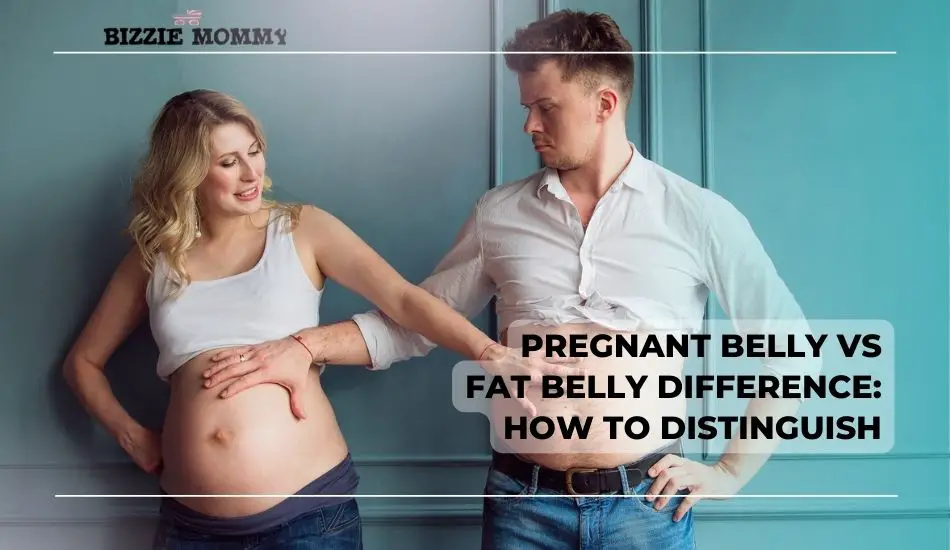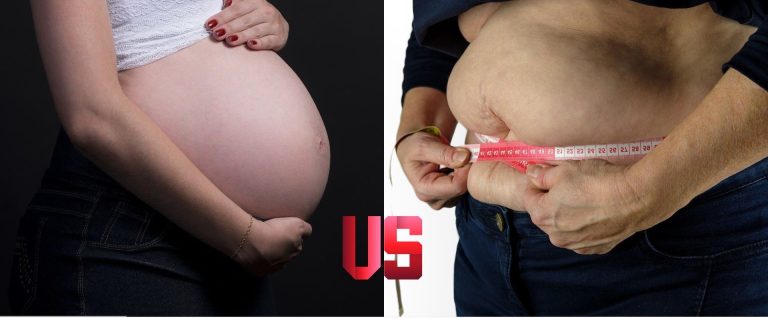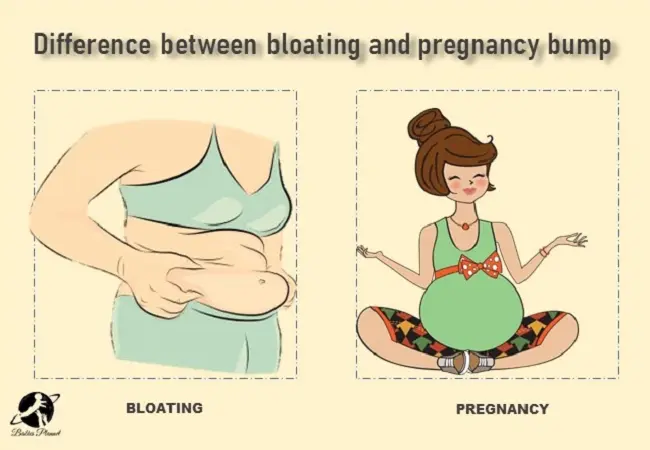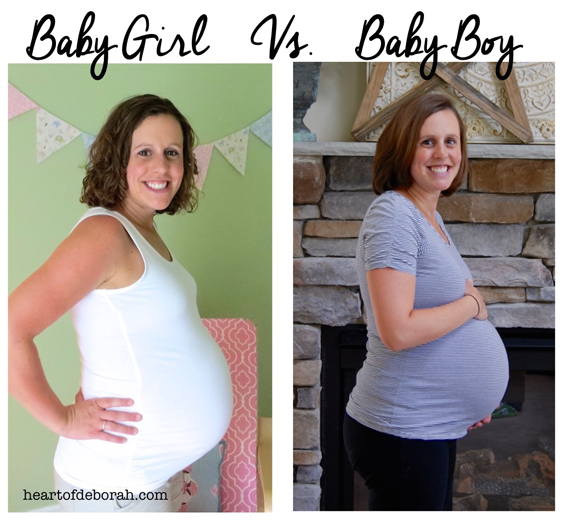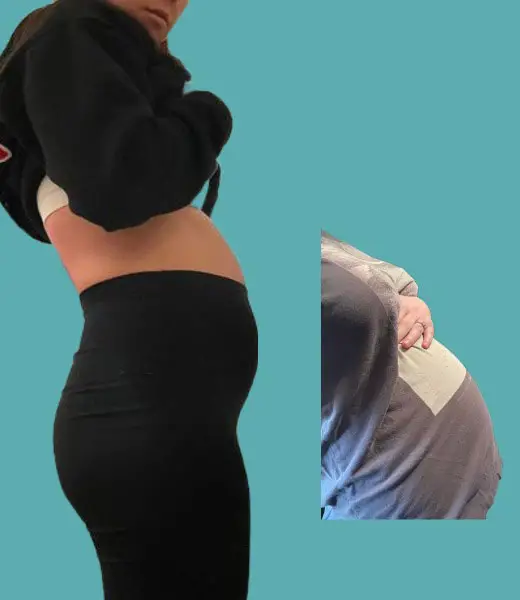Difference Between Fat Stomach And Pregnant
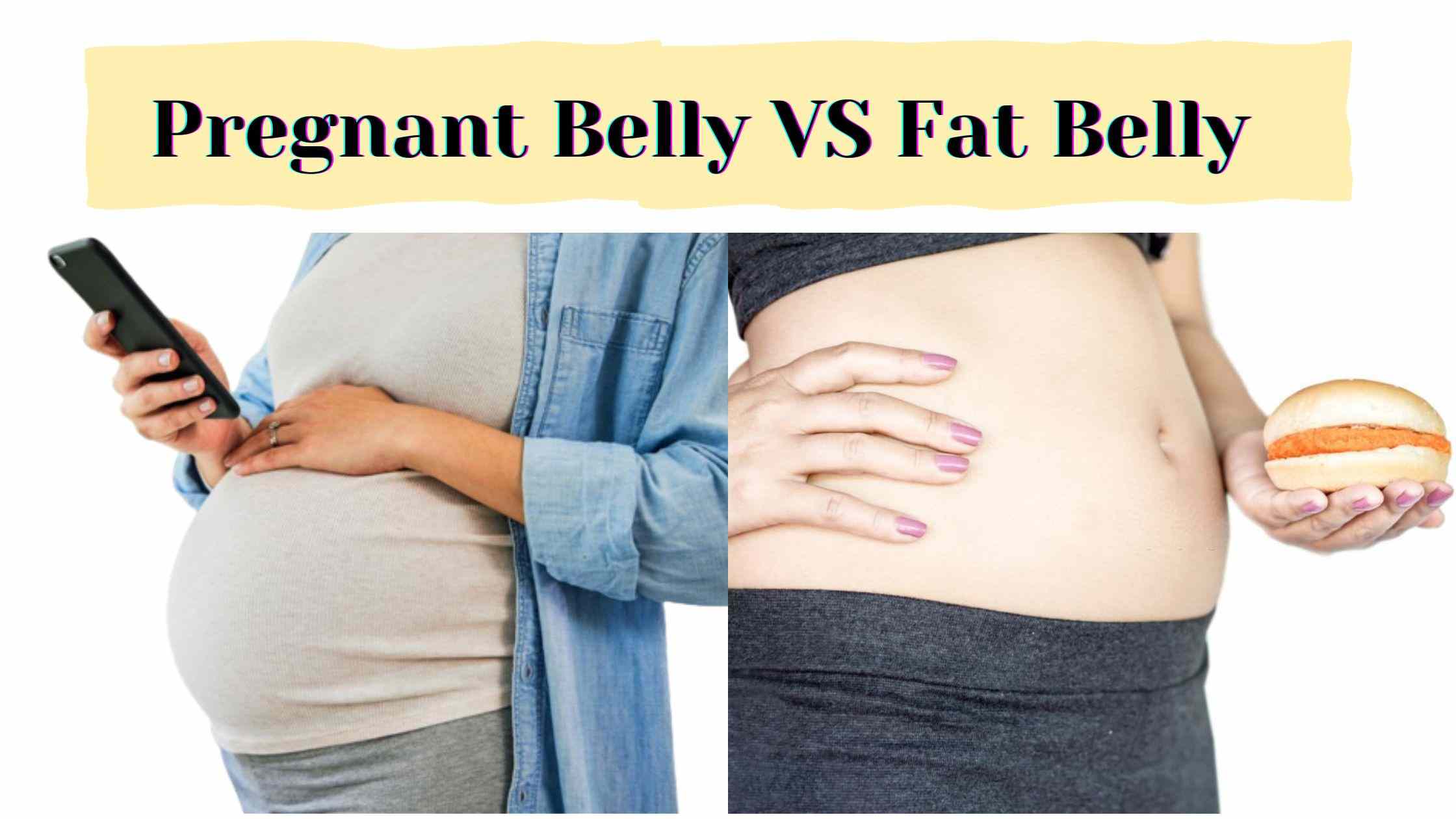
Imagine a warm summer evening, laughter echoing from a backyard barbecue. Sarah, a vibrant woman in her early thirties, gracefully navigates the crowd, a gentle curve adorning her midsection. Is it the happy weight of good living, or is there a tiny miracle on the way? The question, whispered with a mix of curiosity and excitement, highlights a common social puzzle: distinguishing between a fat stomach and the beautiful bloom of pregnancy.
At the heart of this social guessing game lies a genuine interest in celebrating life changes, but also the potential for awkward missteps. Understanding the nuances between a tummy filled with delicious BBQ and the gentle swell of a baby bump can save embarrassment and foster supportive, informed conversations.
The Great Belly Debate: Decoding the Differences
So, how can we tell the difference? It's not always easy, and often, it's best not to assume! However, there are some key distinctions to consider, focusing on the timing, texture, and accompanying symptoms.
Timing is Everything
A change in belly size due to weight gain is typically gradual, occurring over weeks or months. Pregnancy, on the other hand, often presents a more rapid change, particularly in the first trimester when hormonal shifts cause bloating and water retention.
The belly might start to noticeably expand around the end of the first trimester or the beginning of the second, depending on factors like the woman's body type and whether she's had previous pregnancies.
Texture and Shape Tell Tales
A stomach predominantly made up of fat tends to be softer and more pliable, often evenly distributed around the abdomen. It might jiggle a bit when you move.
A pregnant belly, however, tends to feel firmer, especially as the pregnancy progresses and the uterus expands. The shape is often more rounded and protruding, centered lower in the abdomen.
Beyond the Belly: The Symphony of Symptoms
Weight gain usually doesn't come with morning sickness, fatigue, or frequent urination. These are hallmark signs of pregnancy, orchestrated by hormonal changes.
Other clues can include breast tenderness, changes in appetite (cravings or aversions), and missed periods. "These are classic signs," explains Dr. Emily Carter, an OB/GYN at City Women's Health Clinic, "and when combined with a change in abdominal shape, should prompt consideration of pregnancy."
The Science Behind the Swell
To truly understand the difference, let's delve a little deeper into the physiological changes. A "fat stomach," medically speaking, is characterized by an accumulation of adipose tissue, both subcutaneous (under the skin) and visceral (around the organs).
This can be due to a variety of factors, including diet, lack of exercise, genetics, and certain medical conditions. When you consume more calories than you burn, your body stores the excess as fat.
Pregnancy, conversely, involves a complex cascade of hormonal and physical transformations. The hormone Human Chorionic Gonadotropin (hCG) is produced after implantation, which is the basis for pregnancy tests.
Estrogen and progesterone surge, affecting everything from mood to metabolism. The uterus grows significantly to accommodate the developing baby, leading to the visible increase in belly size.
Navigating the Social Minefield: Etiquette and Empathy
Even with a clear understanding of the physical differences, it's crucial to approach the topic with sensitivity. Commenting on someone's body, regardless of your intentions, can be fraught with peril.
If you suspect someone is pregnant, the best approach is usually to wait for them to share the news. Avoid direct questions or assumptions.
Instead, offer general support and positive energy. A simple, "You seem to be glowing lately!" can be a far more welcome comment than, "Are you expecting?"
The Importance of Respect
For some women, weight is a sensitive topic, and assumptions about pregnancy can be deeply hurtful. Others may be struggling with fertility issues, making unsolicited comments even more painful.
"We need to foster a culture of body positivity and respect," says social psychologist Dr. Maria Rodriguez. "Focusing on health and well-being, rather than appearance, is always the more empathetic approach."
What To Say Instead
Instead of focusing on the possibility of pregnancy, try these supportive statements:
"You seem so happy and radiant lately."
"Is there anything I can do to help you out?"
"You're looking great!"
These comments are positive, non-invasive, and focus on the person's overall well-being.
Beyond Appearance: Focusing on Health
Ultimately, whether someone has a "fat stomach" or a "baby bump," the most important thing is their health and happiness. Promoting a healthy lifestyle, regardless of body shape or size, is crucial.
Encourage balanced diets, regular exercise, and mental well-being. These are essential for everyone, regardless of their reproductive status.
Healthcare providers can offer personalized advice and support. Remember, there are numerous resources available for those seeking guidance on weight management or pregnancy.
Conclusion: Celebrating Life's Journey
The subtle difference between a fat stomach and a pregnant belly is more than just a matter of physical appearance; it’s a reflection of our societal attitudes towards bodies, pregnancy, and personal well-being.
By approaching the topic with empathy, respect, and a focus on health, we can navigate these conversations with grace and avoid causing unnecessary hurt. Let's celebrate all bodies and the diverse journeys they undertake, supporting one another along the way.
Ultimately, the best way to know if someone is pregnant is to simply wait for them to share their joy. Until then, let's focus on building a community of support and understanding, where everyone feels comfortable and celebrated for who they are.
